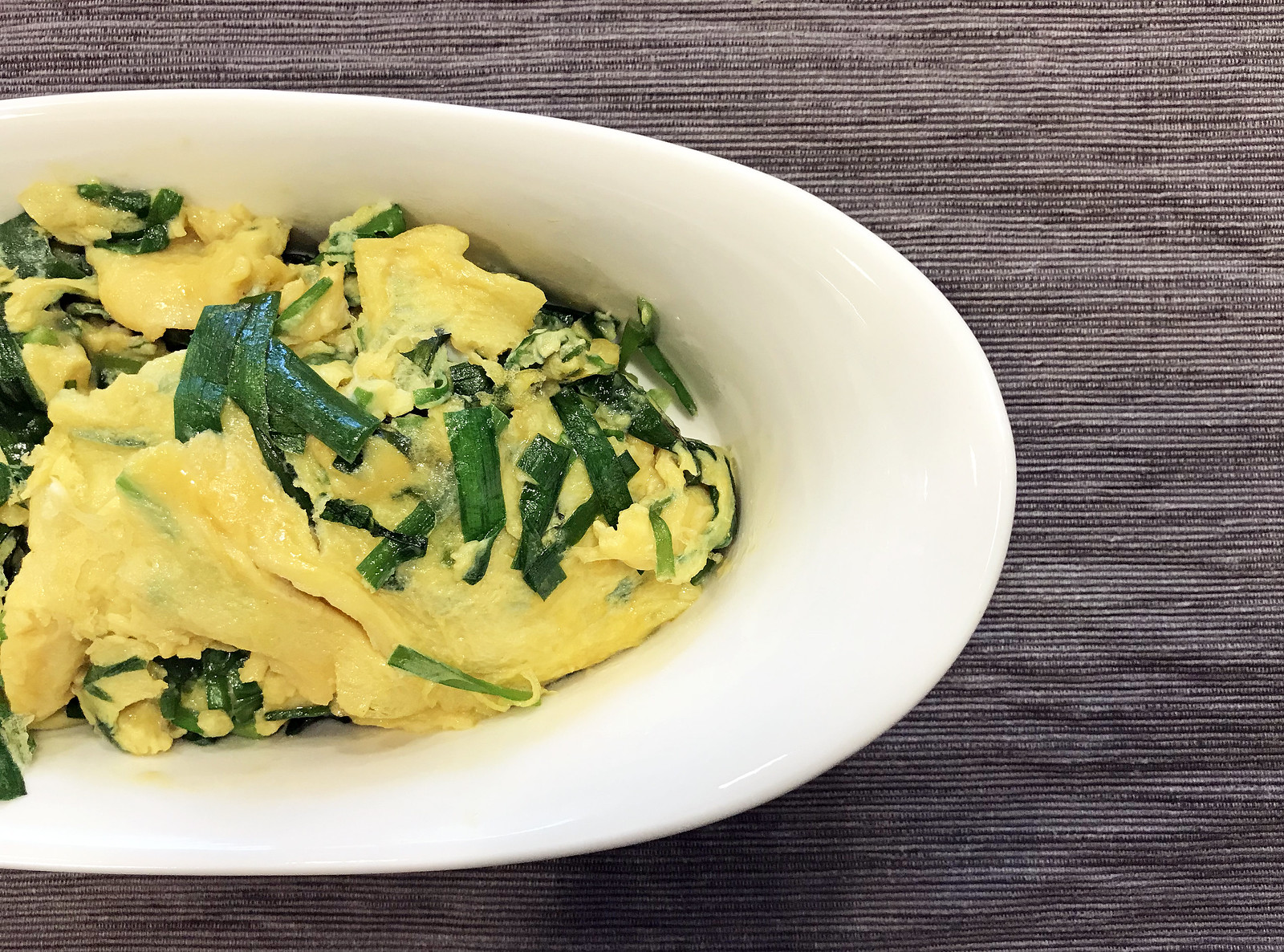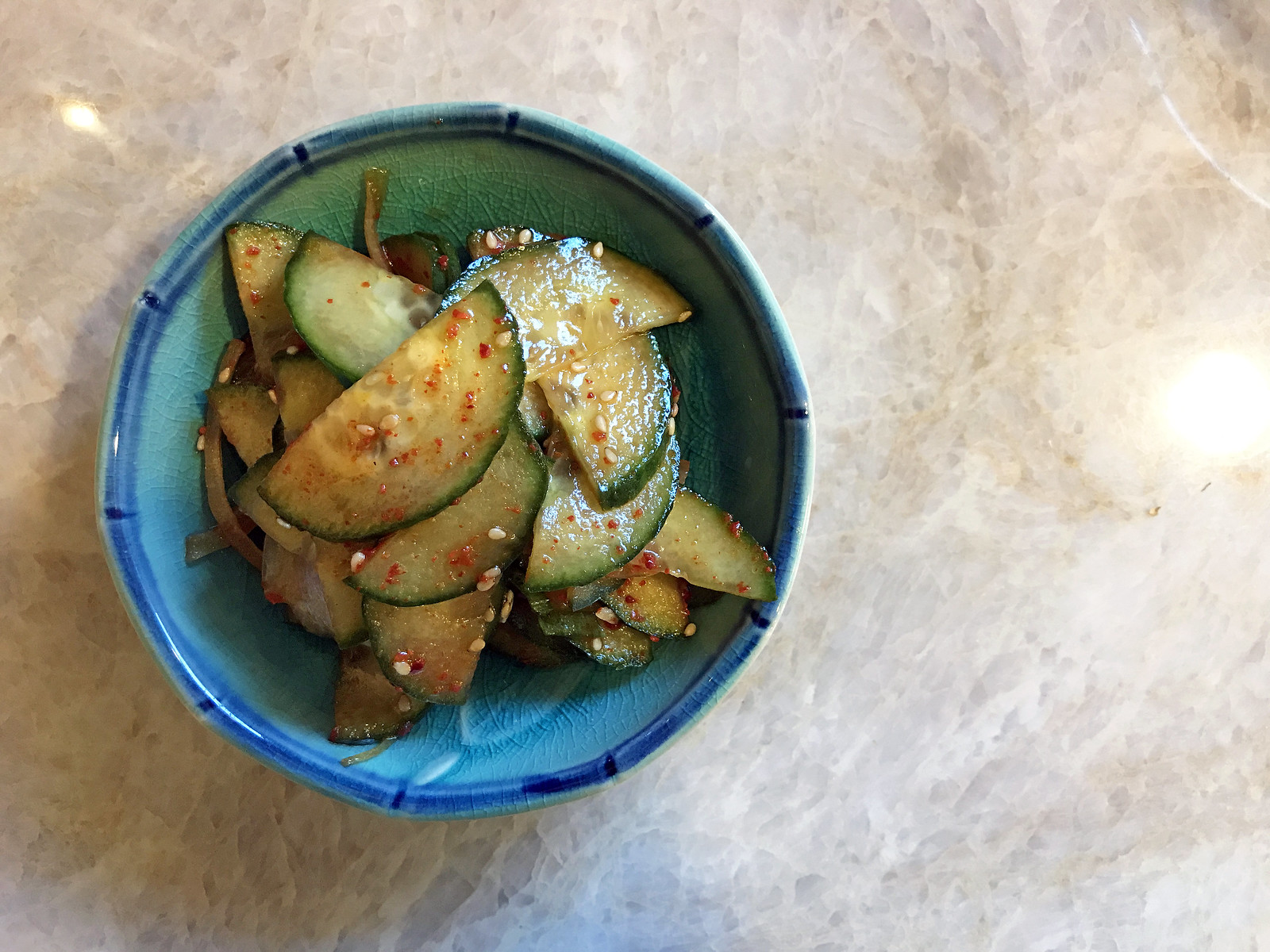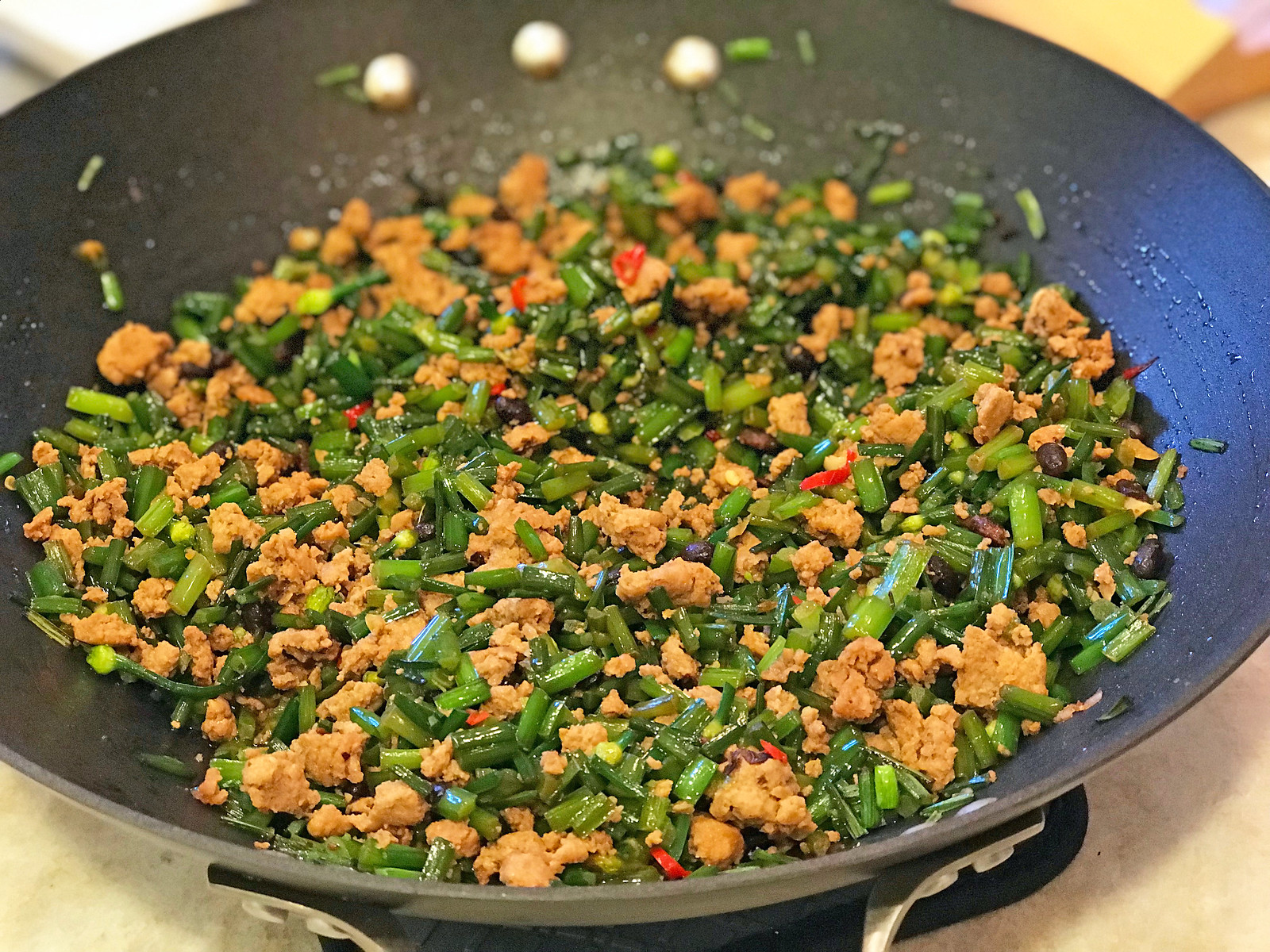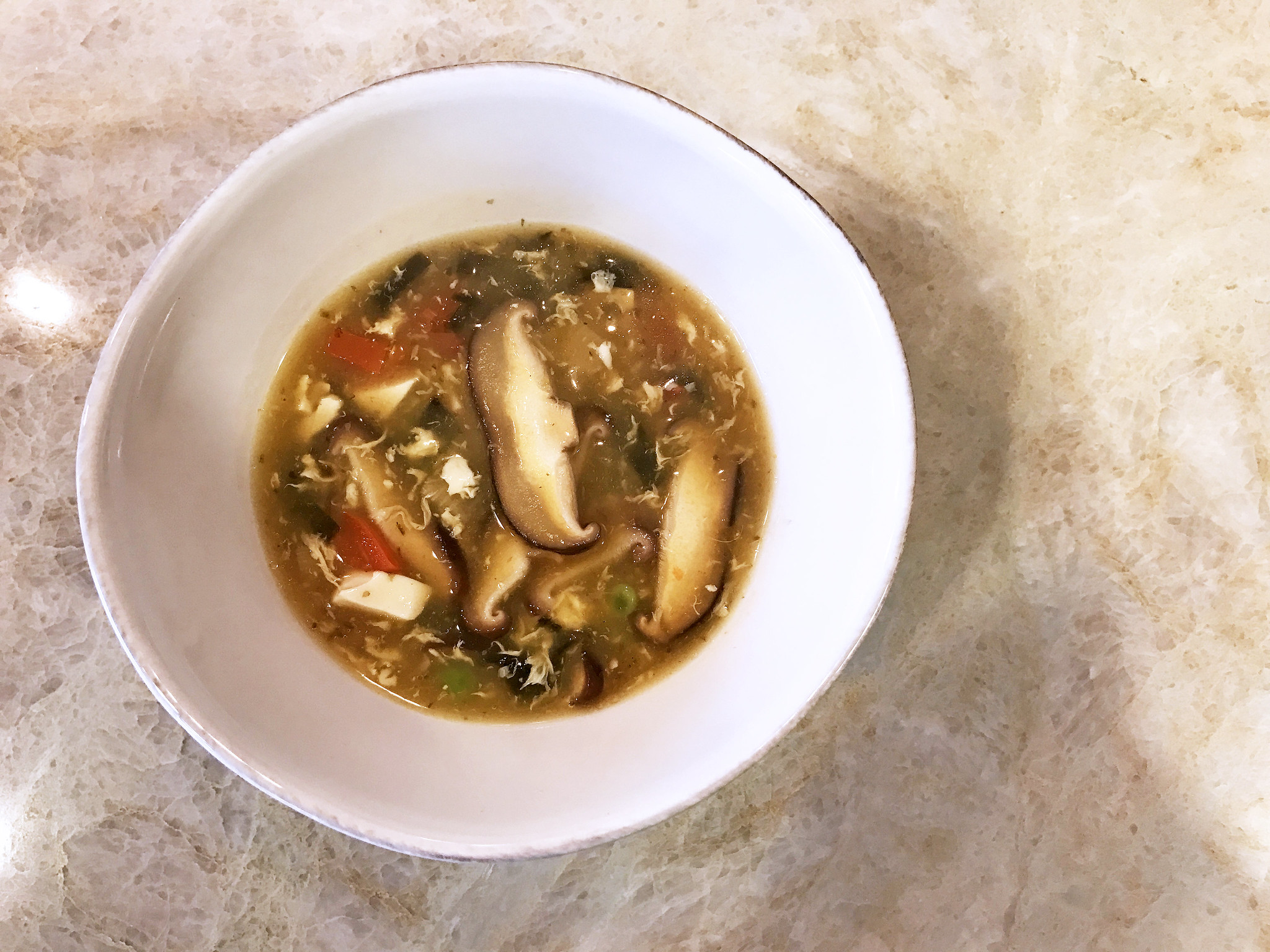I probably make these scrambled eggs at least once a month. Easy, healthy, and delicious, they make a perfect breakfast (who am I kidding, I make this for dinner all the time too). You can serve this atop rice, but I prefer these soft and warm eggs by themselves.
Make sure to get Asian garlic chives for these, as the flavor and texture are completely different than your standard grocery store chives.

Ingredients:
1 small bunch garlic chives (about 1/2 pound), cleaned and chopped into 1-inch lengths
4 eggs
1 teaspoon sugar
1 teaspoon soy sauce
1/4 teaspoon salt
1/4 teaspoon instant dashi granules (optional)
2 teaspoons vegetable oil
1. In a bowl, beat the eggs, sugar, soy sauce, salt, and dashi together until blended.
2. Heat the oil in a nonstick frying pan over medium-high heat, then add the garlic chives, sauteing for a couple of minutes until they’re bright green and wilted.
3. Pour the eggs into the pan and turn down the heat to low. Let the eggs cook, undisturbed, until you see the bottom of the eggs turn opaque.
4. Give the eggs a gentle stir, scraping the cooked egg up from the edges off the bottom of the pan, and allowing the raw egg at the top to run underneath. Let this cook until the bottom layer turns opaque and stir again.
5. Repeat step 4 until the eggs have reached your desired doneness (I like for much of the eggs to remain soft and opaque). Remember that the eggs will continue to cook a little after you turn off the heat. Serve warm.




